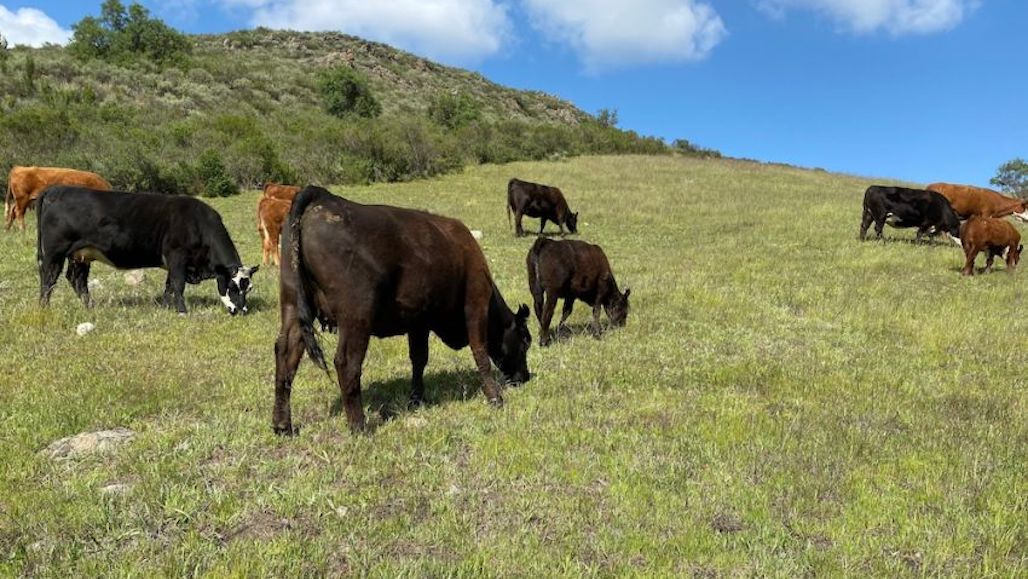While we are all watching “the big one” — California’s Prop 12, now being considered by the U.S....
No, Grass-Finished Beef Isn't Healthier or Better for the Environment

A bustling business since 1959, Ralph’s Packing Company has been a staple in Perkins, Oklahoma, for four generations. What started off as a packing plant, processing animals on a weekly basis, has turned into a business that’s carving out a different niche.
“Ground meat is a long-standing staple here,” says Jake Nelson, food safety coordinator at Ralph’s Packing Company. “Ground beef, ground pork, the sausages - those are our staples.”
Like many other small meat processors, Jake Nelson says Ralph’s Packing Company is seeing a shift to more direct marketing of meat.
“Those individuals who own and raise livestock have shifted the way they market those animals, away from what we classically call the sale barn into more direct to the consumer marketing,” says Nelson.
Misinformation About Meat
Accelerated by the pandemic, the internet and social media have opened the door for more direct sales. While the web has opened new doors for local meat providers through consumers’ growing hunger for freezer beef and pork, it’s those same avenues that can also be a source of misinformation about meat.
“Probably some of the biggest misconceptions of those finished on corn or grain-based diets are those environmental impacts that they could have,” says Gretchen Mafi, Professor and the Ralph & Leila Boulware Endowed Chair in the Department of Animal and Food Sciences at Oklahoma State University
As a meat scientist, Mafi has studied the scientific differences between beef that comes from animals finished on a corn-based diet versus those animals finished on grass. She says both practices produce meat that have many similarities.
“They've all grazed throughout the vast majority of their life,” says Mafi. “And they're only finished on corn for a short time, and nutritionally have very minimal differences.”
Mafi says grass-finished meat is a niche market, accounting for only about 5% of the total beef produced in the U.S today. At Ralph’s Packing Company you’ll only find corn-finished beef, but that’s mainly due to consumer demand.
“There’s a tremendous difference in carcass characteristics, product attributes, aroma, palatability and visual characteristics with grain-finished beef,” says Nelson. “It's a radical difference between the two, and there's not one better than the other.” Instead, Nelson says it all boils down to preference. But much of that preference can be attributed to taste.
Mafi says from a meat scientist’s point of view, the taste is due to one major factor: the marbling of the meat. “That fat, that marbling, contributes to flavor, it contributes to juiciness and then somewhat to tenderness,” she says. “It's really important to that eating satisfaction that we get from a steak or a roast.”
Environmental Impact
With no nutritional difference between grass and grain-finished beef, Mafi says the science also proves grass-finished isn’t more environmentally friendly, which is one of the biggest misconceptions among consumers today.
“The research simply shows us that there's really not a difference from a sustainability or an environmental impact or carbon footprint. And sometimes even the grass-finished, because it takes longer to reach that market weight or to provide the same amount number of pounds of beef, can have a higher impact environmentally than those finished in a feed yard,” says Mafi.
Some of the misconceptions about grass-fed beef being healthier for people and the environment stem from places like Butcher Box, which is a subscription meat service offering only grass-finished meat. On the website, Butcher Box claims grass-fed beef is a healthier, leaner and more humane alternative to the standard beef you can find at the grocery store. Meat scientists say, that’s simply not true, one is not superior to the other.
"Grass-Fed" Versus "Grass-Finished"
It’s terms like “grass-fed” that can be misleading and cause confusion.
“That is probably better described as grass-fed and finished because we finish these animals to an endpoint,” says Nelson. “Their purpose in life is to be a food source for us, so we need to be careful about the terminology we use so that we don't confuse consumers.”
Personal Preference
For someone who’s studied beef, what type of production method does Mafi prefer? Well, she says it all comes down to taste and her personal preference.
“I definitely prefer cattle finished on corn or other grains,” she says. “It just has a beefier flavor (more juicy), it’s usually more tender. They're going to have more inter-muscular fat to give it that added flavor and juiciness to give it that beef flavor intensity, the buttery beef fat that we associate. Also, I'm not adding a ton of calories just by adding that additional marbling.”
Whether you opt for a meat that’s finished on grass, or a steak finished on corn, meat experts say it's all about preference, and they're serving up the facts so beef is what’s for dinner for years to come.
Editor’s Take:
Will the comments made in this article put an end to this debate? Not likely. However, it does go a long way towards debunking some of the emotionally-charged rhetoric by citing scientific evidence that refutes some of the claims. Let’s face it, for those like yours truly, who loves a good burger now and then, I’ve had both grass-fed and corn-fed but really can’t tell a lot of difference. Forced to choose, I’d probably lean towards grain-fed, but like the article says – it all comes down to personal preference. As for the environmental impact, the article calls it pretty much a draw. Bottom line – support the beef producers in your area with great values on trucks, parts and service along with the over-the-top, amazing AgPack. That way everyone wins!







